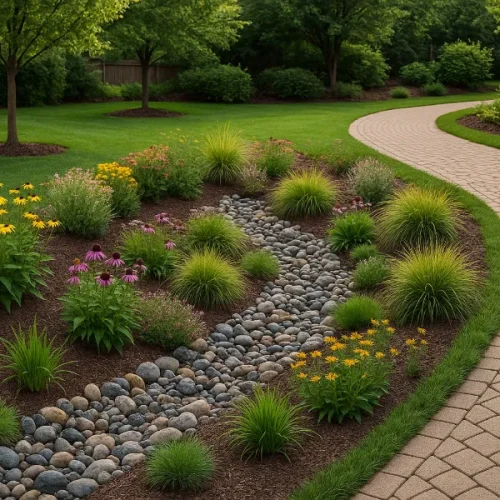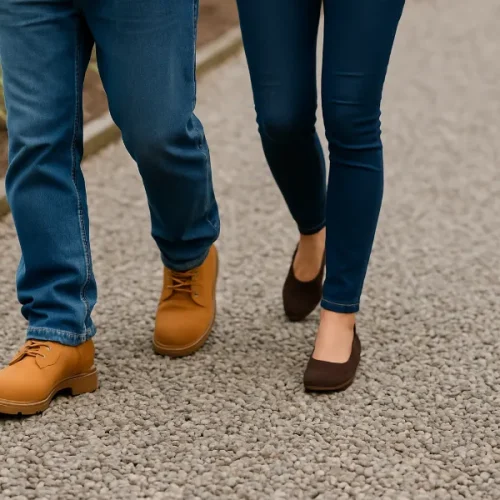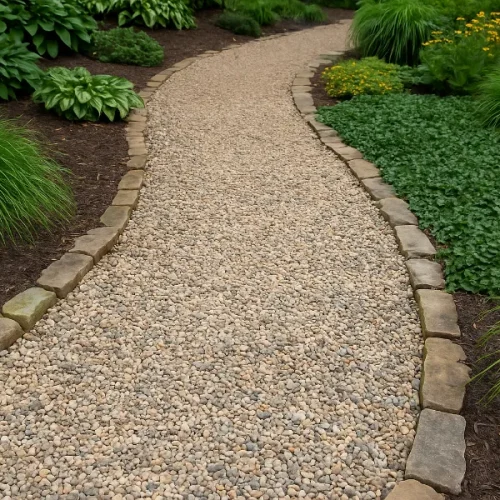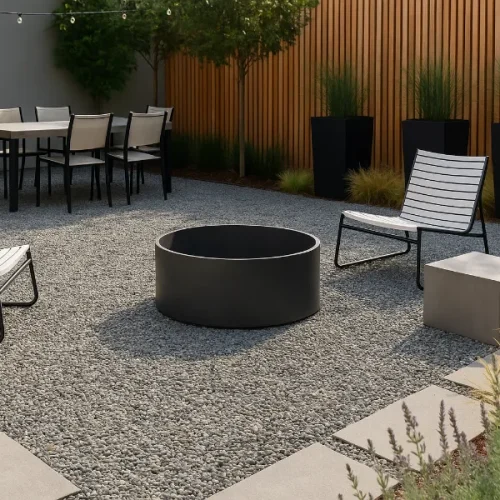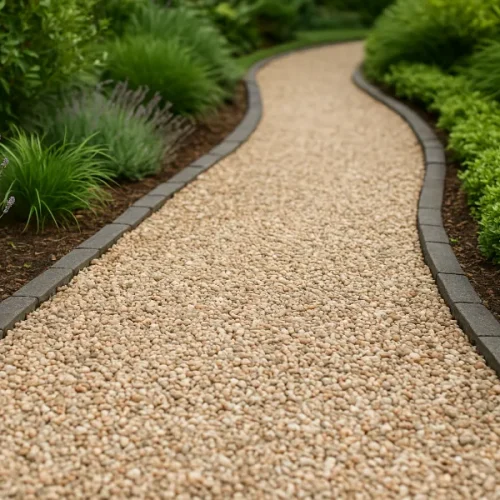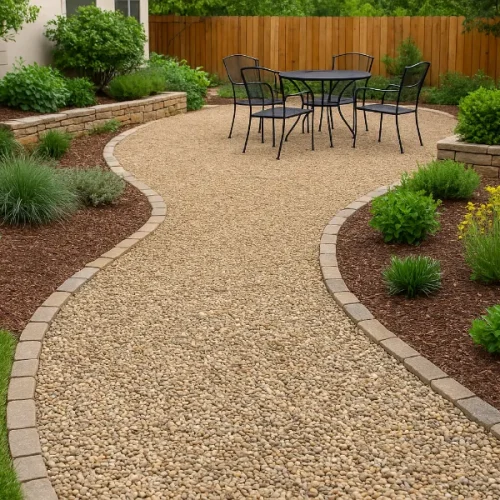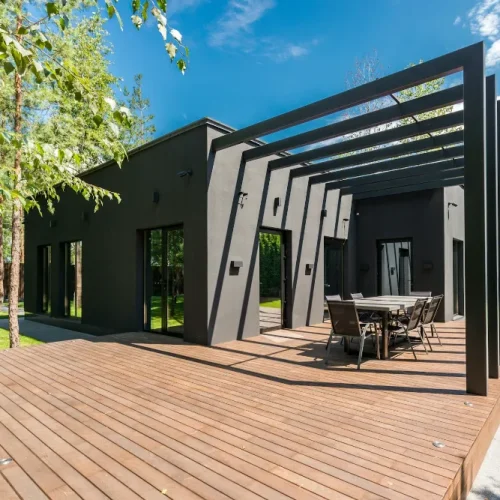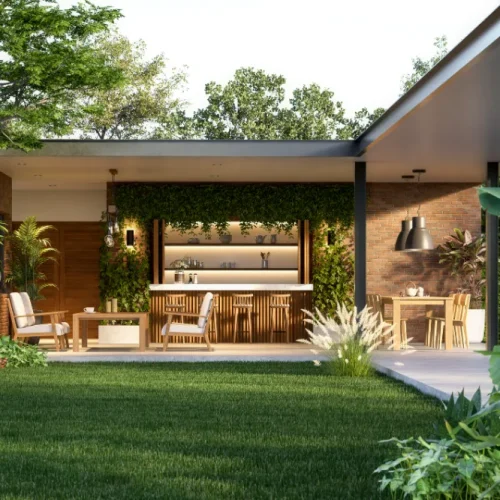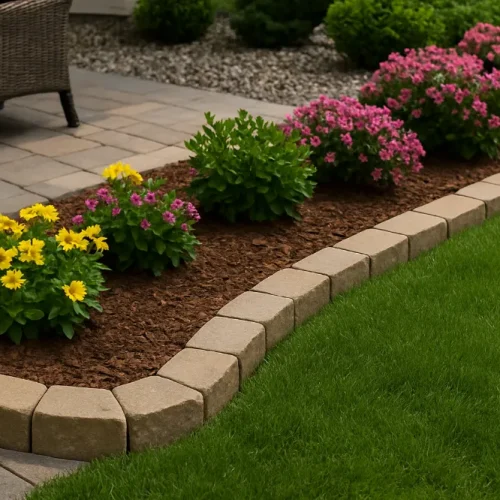
Minimalism in outdoor spaces is about creating calm. It’s about designing a place that feels open, intentional, and restorative rather than crowded with items and distractions. A minimalist backyard doesn’t need to be empty or stark. Instead, it focuses on thoughtful choices, natural materials, and a layout that encourages stillness and connection. Whether your outdoor space is large or compact, the principles of minimalist design can transform it into a peaceful retreat.
Minimalism isn’t simply a style; it’s a mindset. In the context of a backyard, it asks you to think carefully about what you bring into the space and why. Every stone, plant, chair, and walkway has a purpose. The result can feel like a breath of fresh air: clear lines, soothing textures, and enough open space for sunlight and breezes to move freely.
This guide explores the core ideas behind minimalist backyard design and offers inspiration to help bring a sense of calm and refinement to your outdoor space.
Start With a Clear Purpose
Before choosing furniture or plants, consider how you want to use your backyard. Do you envision it as a reading sanctuary, a place to entertain, a dining space, or a quiet spot to drink coffee each morning? Minimalism aligns design choices with lifestyle needs.
Identifying your purpose helps prevent clutter and unnecessary purchases. If the main goal is relaxation, you may choose a comfortable lounge chair, shade structure, and subtle lighting. If you want to host friends, a dining table with clean lines might anchor the yard. Everything begins with intention.
The Power of Open Space
Many backyards feel cluttered because they attempt to fill every inch with décor, plants, or structures. Minimalist design values the opposite: the space between things. These open areas allow the eye to rest and the mind to settle.
Open space also gives a yard flexibility. A simple lawn or gravel courtyard, for example, can shift from sunbathing spot to yoga mat zone to picnic setting without effort. When designing your yard, resist the urge to fill all corners. Instead, create a landscape where emptiness itself is part of the beauty.
Think of open space as natural breathing room for both the environment and your mind.
Choose a Calm and Natural Color Palette
Neutral tones help create a soothing aesthetic. Shades of gray, beige, off-white, brown, and muted greens tend to work well. These colors blend into the natural environment rather than compete with it.
Stone pathways, gravel patios, light wood furniture, and soft green native grasses are all examples of ways to incorporate neutral tones. Even brighter elements like flowers can be chosen thoughtfully. A single color accent, such as white blooms or lavender, can be more impactful than a garden full of competing hues. Minimalism encourages using color sparingly but meaningfully.
Use Natural Materials
Natural materials help the backyard feel grounded and timeless. Stone, wood, clay, and gravel tend to age well and fit a minimalist aesthetic. They also invite connection through subtle texture and tone.
Some ideas include:
- A gravel patio framed with large stepping stones
- A cedar or teak bench placed against a garden wall
- A smooth concrete fire pit with natural wood stools
- A bamboo or wooden privacy screen
- Poured concrete planters with sculptural shapes
These materials offer a sense of calm and organic warmth. They also complement greenery rather than overshadow it.
Simplify Plant Selection
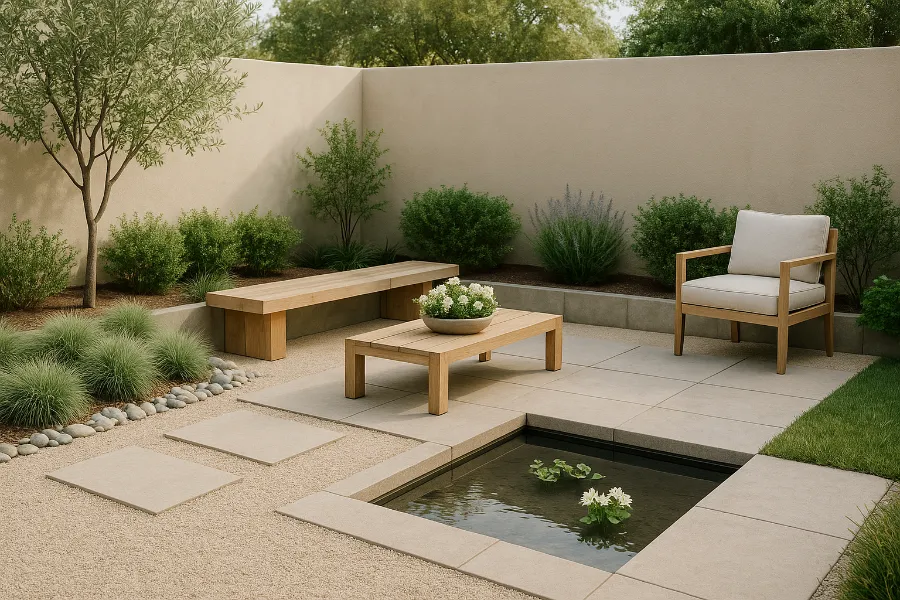
Minimalist landscaping doesn’t mean a lack of plants. Rather, it focuses on intentional plant choices and structured composition. A simple arrangement often makes a stronger visual statement than a crowded bed of different species.
Consider using:
- A single type of ornamental grass along a fence line
- A row of shrubs or hedges to create rhythm and softness
- A lone sculptural tree placed as a focal point
- A small herb garden in clean-lined planters
Native plants are especially useful in minimalist spaces. They require less maintenance and harmonize naturally with local environments. The goal is to create unity and visual coherence. Instead of creating a garden full of highlights, choose one plant grouping or feature to shine.
Create a Strong Focal Point
Minimalist spaces often benefit from one clear feature to draw the eye. This focal point could be a fire pit, water bowl, sculpture, tree, or sitting area. A focal point creates order and gives the space purpose and structure.
Some effective focal point ideas include:
- A Japanese maple displayed in a gravel courtyard
- A smooth stone fountain surrounded by nature
- A hanging egg chair quietly swaying in the shade
- A rectangular reflecting pool with clean edges
When the eye knows where to rest, the entire space feels organized and serene.
Focus on Clean Lines and Simple Geometry
Minimalist backyards often rely on geometric shapes to establish structure and visual calm. Straight edges, uniform borders, and grid patterns can all help create harmony.
For example:
- A rectangular patio placed flush with the ground
- A row of square stepping stones leading to a sitting area
- A bench aligned with the fence line
- A border garden with evenly spaced plants
Even curved shapes can feel minimalist if they are smooth and purposeful rather than ornate. The key is consistency and clarity in structure.
Furniture Selection: Comfortable but Uncluttered
Minimalist outdoor furniture prioritizes function, comfort, and subtle design. Look for pieces with clean lines, sturdy frames, and neutral upholstery. Avoid oversized sets or too many accessories.
Good minimalist furniture choices include:
- A simple wood or metal bench with a weather-resistant cushion
- A low-profile lounge chair with a thin frame
- A dining table with a streamlined silhouette
- A minimal side table for drinks and books
Limit décor elements like patterned pillows or decorative objects. The more simple the furniture, the easier it is to keep the yard feeling open and restorative.
Let Light Set the Mood
Lighting plays a powerful role in minimalist outdoor spaces. Natural light is the main element, but artificial lighting should be warm, soft, and unobtrusive.
Consider:
- String lights arranged in straight lines rather than zigzags
- Ground-level pathway lights that glow instead of glare
- Lanterns or candles for ambiance
- Wall-mounted lights with clean shapes and warm bulbs
Minimalist lighting should support the mood, not overwhelm the space.
Incorporate Water for Calm and Movement
Water has a grounding presence in design. Even small water features can introduce soothing sound and subtle motion into a minimalist backyard.
Simple options include:
- A ceramic bowl fountain with a quiet trickle
- A smooth trough fountain along a wall
- A shallow reflecting pool that mirrors the sky
- A small fish pond with still water and few plants
The key is simplicity. Avoid overly decorative fountains or multiple elements that compete for attention.
Maintain Thoughtful Order
Minimalism thrives on maintenance, not perfection. Leaves will fall, grass will grow, and stone paths will shift slightly over time. The goal isn’t to fight nature but to care for the space with a gentle hand.
Simple daily and seasonal routines can help:
- Sweep or rake gravel and walkways
- Trim hedges lightly and consistently
- Remove weeds early before they spread
- Keep surfaces clean and uncluttered
- Store tools and accessories out of sight
This light maintenance helps preserve the clarity of the space.
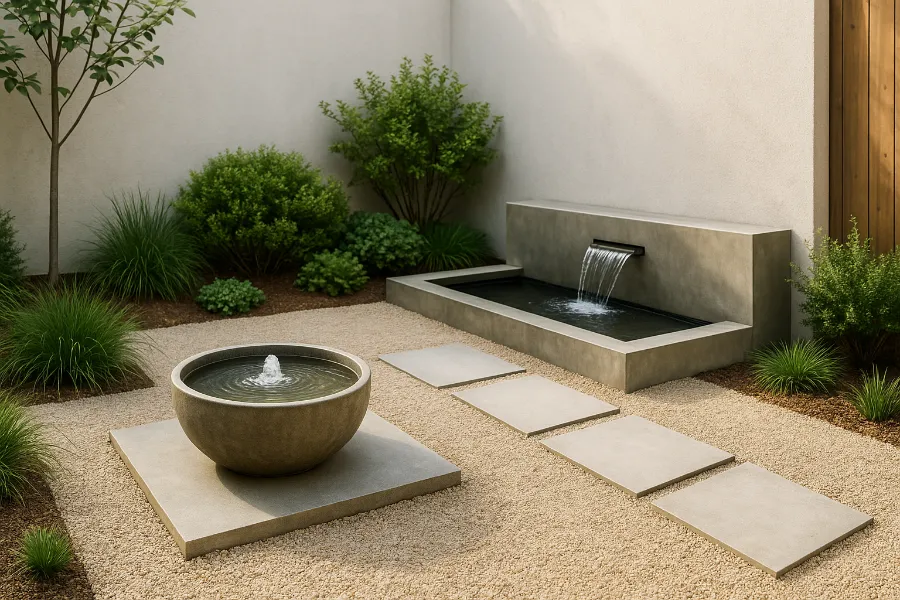
Embrace Empty Moments
Perhaps the most powerful aspect of minimalist backyard design is the emotional space it creates. A backyard that isn’t crowded invites reflection, rest, and grounding. It becomes a refuge for quiet mornings, evening conversations, or simply noticing wind and sunlight. Minimalism teaches that you do not need more to feel more sometimes, less truly is enough.
When thoughtfully designed, a minimalist backyard is not just an outdoor area. It is a sanctuary. A place to step away from the noise and re-center yourself in something slower, quieter, and deeply refreshing. It is a reminder that simplicity can be beautiful, calming, and full of life.
FAQs
A minimalist backyard focuses on simplicity, clean lines, open space, and intentional design elements rather than clutter or excessive décor.
Yes. Because they avoid overcrowding and use low-maintenance plants and materials, they are typically easier to care for.
Neutral shades such as beige, white, gray, soft greens, and natural wood tones create a calm and cohesive look.
Absolutely. The key is to choose a small number of plant types and repeat them for unity instead of mixing many varieties.
Natural materials like wood, concrete, gravel, clay, and stone are commonly used to create clean and timeless textures.
Select pieces with simple silhouettes, durable materials, and neutral colors. Avoid bulky sets and unnecessary décor.
A sculptural tree, a fire pit, a stone fountain, or a clean-lined seating area can serve as a visual anchor.
Yes. Minimalism is ideal for small yards because it emphasizes openness and reduces visual clutter.
Use intentional placement of plants, textures, and a focal feature while preserving open space as part of the design.
Yes. Soft, warm lighting enhances the atmosphere and highlights key areas without overwhelming the design.


